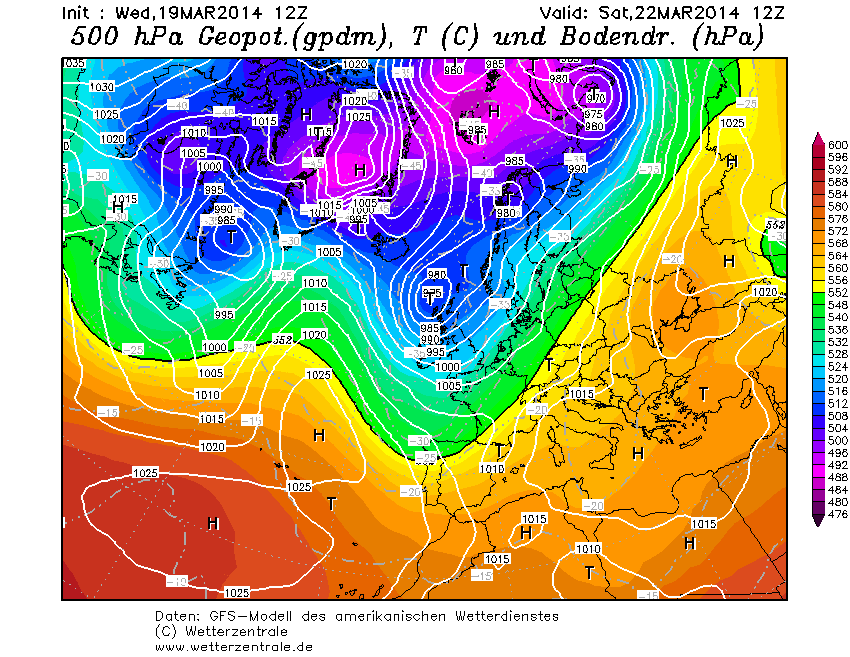Today, the WeatherBlog is happy about the successes of modern science. As a student at a more advanced stage, you occasionally ask yourself why you're actually doing what you're doing and who benefits from it. The meaningfulness of your own doctoral or master's thesis in particular may be questionable, but occasionally science in general succeeds in doing something cool and then you have the feeling that something is going right somehow and in general.
The big news of the last few days in this sense was this:
Let me play among the stars
The image comes from a telescope in Antarctica called Background Imaging of Cosmic Extragalactic Polarization 2 (BICEP2). This has been used for a few years to look into space in the microwave range to investigate the cosmic background radiation and perhaps, at some point, to find a polarization of the radiation, because that would be a strong indication of the existence of gravitational waves. Einstein's general theory of relativity states (roughly) that spacetime is a kind of pudding that wobbles if you hit it hard enough with a spoon. This wobbling is the gravitational waves. (Gravity waves are something else and much more relevant for the weather, see lee waves and the following clouds. In English, a distinction is made between gravitational waves and gravity waves.)
BICEP2 has now found exactly what it was hoped to find, and in such a clear way that the researchers involved didn't even want to believe the data at first and spent several years pondering whether it could really be true before publishing it. (The two corresponding scientific publications can be found here, for the very motivated.) Incidentally, the people who received the Nobel Prize in 1978 for the discovery of cosmic background radiation initially thought they had measured incorrectly because pigeons had pooped on their instruments. Of course, the discovery of BICEP2 must first be verified and also found by other people and instruments, but so far we are confident that no penguins or pigeons were involved. Here's a nice video showing one of the young researchers on the BICEP2 project giving the good news to an older professor who has been working on the subject for 30 years.
Direct proof of the wobbly pudding would mean that the origins of the universe are a good deal better understood, that the Big Bang really did bang at the beginning and that the universe really is expanding. This gives rise to all kinds of potential for complicated considerations, such as the merging of gravitational and quantum theory. The WeatherBlog doesn't pretend to understand all this, but it still thinks it's cool.
Let me see what spring is like on (Jupiter and) Mars
Let's move on to the weather, or rather spring. NASA recently published an image that was taken in January and shows how the southern slopes on Mars are thawing out.
What is melting here is not snow, but frozen carbon dioxide, also known as dry ice. On Mars, it gets so cold in winter that around 25% of the atmospheric CO2 sublimates and forms a seasonal "snow cover".
A slightly older video about this.
One wonders how something like this would drive. Interesting terrain would already be available:
More information and videos of more terrain.
Nice today, the WeatherBlog also finds the ability to view the north pole of the moon from the couch in two-meter resolution because someone went to the trouble of stitching together 10581 images from cameras on a NASA lunar satellite. Full resolution with zoom and pan option.
And on Earth
In the Alps? Storms and north föhn last weekend, early summer temperatures, dwindling snow everywhere, forests on fire in places. Colorful maps, a long cold front and great excitement for next weekend. The west and the south will get a lot more, otherwise the whole thing will be limited, in keeping with the familiar 2014 tradition. The models are still very divided for the coming week. One sees mild frontal weather, while the other sees a drained Italian low with interesting precipitation options. If the worst comes to the worst, our colleague the oracle will certainly tell us. Meanwhile, the WeatherBlog continues to dream of the stars.










